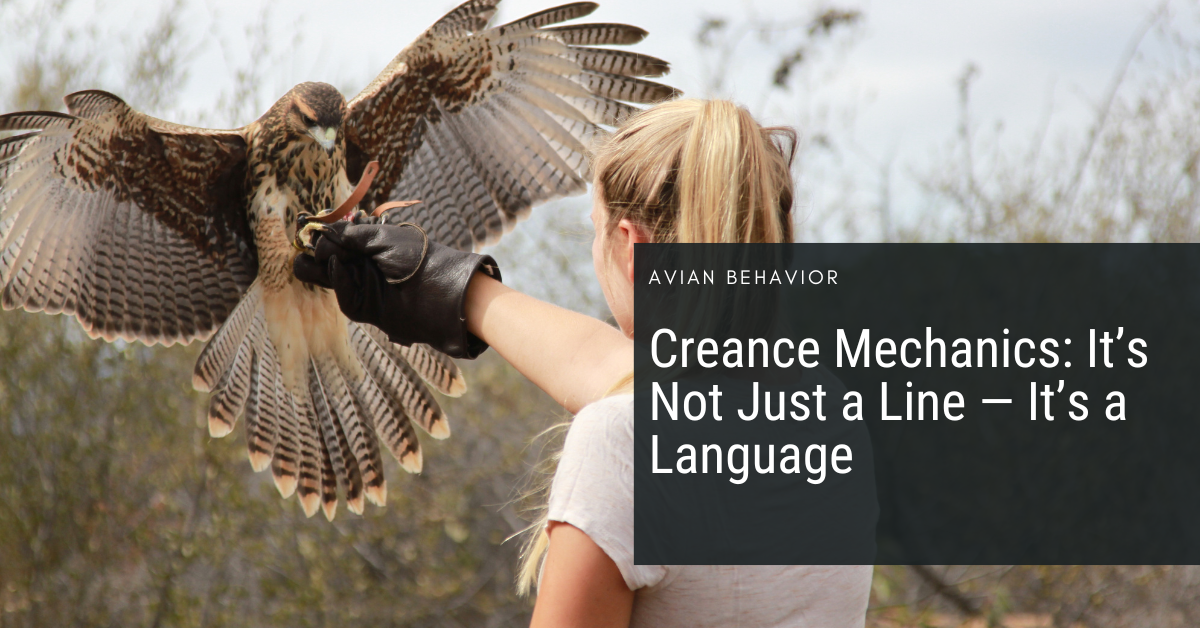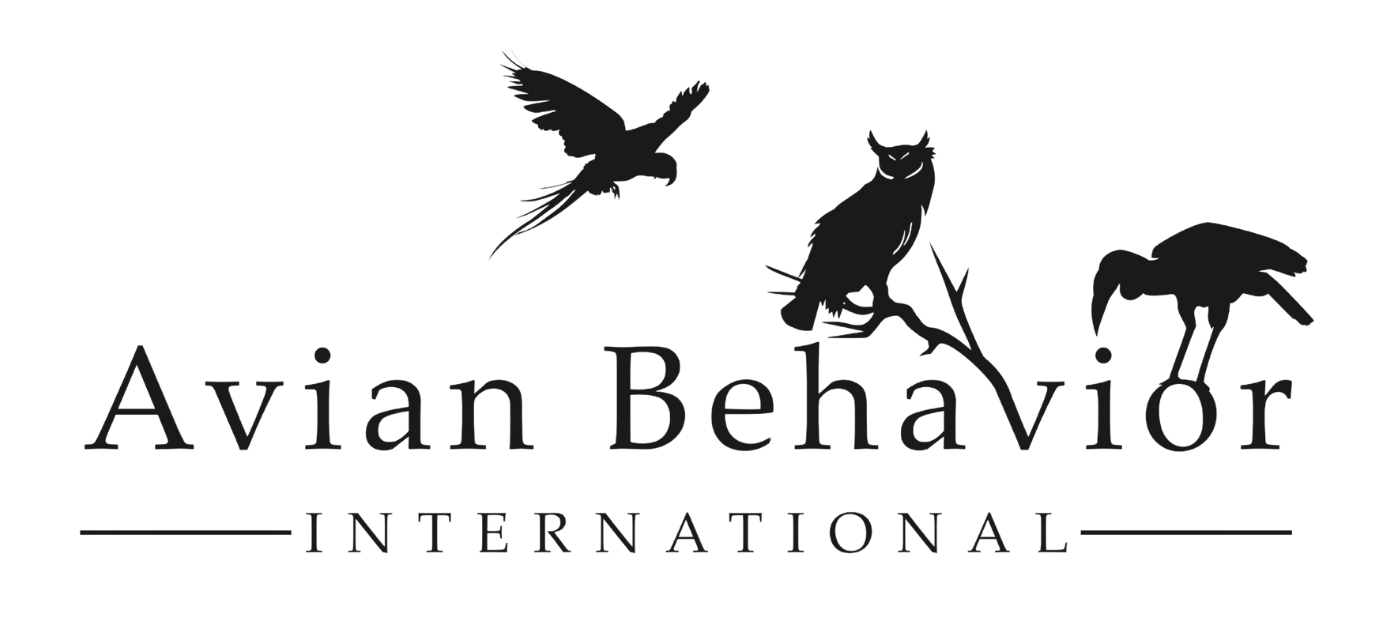
26 Jun Creance Mechanics: It’s Not Just a Line — It’s a Language
If you’ve ever heard the words “just fly the bird on creance a few times and then you’re done,” I want to gently throw a creance line across the table and say, “Let’s unpack that.”
The truth is, creance flying isn’t a one-size-fits-all stepping stone to free flight. It’s a nuanced, evolving training tool — and when used with precision, communication, and foresight, it becomes a language between you and your bird.
In this training tidbit, I want to talk about how creance mechanics go way beyond tying a knot and holding on. It’s about safety, trust, and knowing your individual bird’s needs in that moment.
Why Creance Matters (Even When It’s Not Instagram-Worthy)
At Avian Behavior, we use creance lines with hawks, falcons, owls, and vultures — but not parrots or corvids. Their anatomy just doesn’t support it safely. This decision is part of the bigger picture of how we balance what a bird can do with what it should be asked to do.
Let me say it plainly: The creance should never be felt by the bird. That means you, the trainer, are constantly managing the slack, anticipating movement, reading the wind, watching your teammate’s hat (yes, even that can cause a spook), and coordinating with other handlers. It’s a dance.
Safety First (Yes, That Includes Materials and Knots)
Let’s talk about what not to do first:
-
Don’t use bungee cord. Just don’t.
-
Don’t use fishing line. It’s practically invisible, weak, and likes to get snagged on every invisible thing possible.
-
Don’t tie one knot and call it a day.
Use nylon or paracord. Tie two falconry knots (or one falconry and one half-hitch). And keep two hands on the line at all times. I don’t care how many birds you’ve flown — the moment you drop that second hand, is the moment your bird shows you why that rule exists.
If your bird hits the end of the line, it’s not just a bad training session. It can be a career-ending injury. I’ve seen birds come down with foot damage, ligament issues, and more because the environment wasn’t right, the line was too long, or the team wasn’t communicating.
What’s Your Flight Zone?
Flying on creance doesn’t mean going wherever your heart desires. In fact, you want to avoid your free-flight zone when training on creance. Why?
Because your bird knows the difference. If they’ve flown big and wide in one area, and now you clip them to a line there, they’re going to hit the end — hard. Instead, keep tethered or creance sessions in their own designated areas, like the muse, amphitheater, or a lower-impact training zone.
This is where smart antecedent arrangement comes in — asking yourself, What’s changed since our last session? Sunglasses? Hair color? New perches? Our birds notice. Your session depends on how well you plan around that.
Myth Busting: “You Should Only Use a Creance Once or Twice”
I used to believe this too — that if a bird ever went back on the line after flying free, I’d somehow failed as a trainer. But real life isn’t that neat.
Sometimes Ripley flies up high and I can’t get up there that day. Sometimes the wind shifts. Sometimes the message I’m trying to deliver with her flight needs reworking. That’s life with birds.
Creance is not failure. It’s thoughtful, adjustable training that supports welfare and safety.
Want to dive deeper? Take the full course inside the Avian Behavior Lab. You get 2 weeks FREE when you use the code AVIAN. You’ll get to experience hundreds of hours of deep dive courses and a supportive community to help you grow in your bird training skills.

